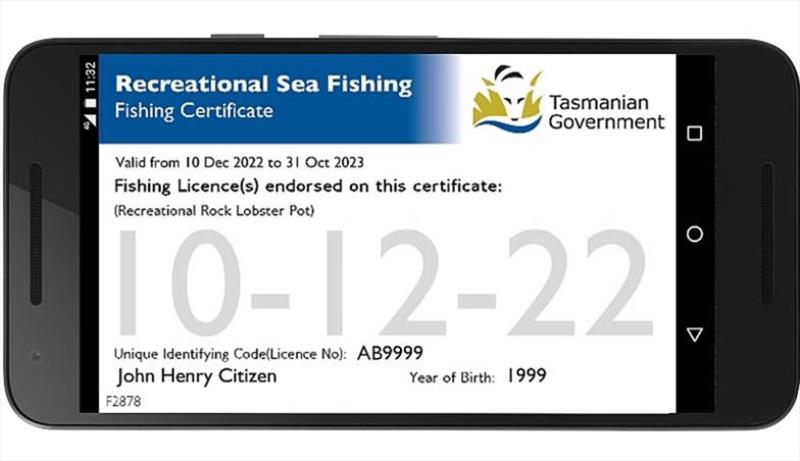
Get ready for the summer fishing season
by NRE Tas 26 Oct 2022 23:11 BST

Licences on sale now © DPIPWE Fishing
Licences, limits and lobsters - everything you need to know and do for the summer fishing season.
Licences on sale now:
The new licensing year begins on 1 November 2022.
Recreational fishing licences for rock lobster, abalone, scallops, nets and set lines are now available online and at Service Tasmania.
Buy or renew your licence here...
Sea Fishing Guide out now
The new Recreational Sea Fishing Guide is available now in Service Tasmania and being distributed to tackle shops. You can also pick up a free fish ruler or measuring gauge.
Rock lobster rules - what's changed?
The new Rock Lobster Fishery Management Plan starts on 1 November. Rules that are changing for recreational fishers are: size limit zones, female size limits (120mm applies to the north and east coasts), tail marking, sharing lobsters when group fishing, and for some fishers, making transit reports.
Rules that aren't changing are: bag, boat and possession limits, seasons and the East Coast Stock Rebuilding Zone area.
These videos explain the main changes:
See website for season dates and more information.
Transit reporting service
Transit reports can be made by phoning the Recreational Fishing Reporting Service on 1300 720 647 at least one hour before:
- transiting the D'Entrecasteaux Channel at season opening with gear*;
- re-entering the D'Entrecasteaux Channel with gear and/or lobster*; and
- transiting between size limit zones with lobster.
*Once the East Coast Stock Rebuilding Zone opens, you do not have to make these reports.
Rock lobster gauges
New rock lobster gauges will be available from Service Tas in early November. You can continue to use the previous multi-gauge which still has the correct widths but please update the zone text using a permanent marker.
Check the rules
Garfish spawning closure
Seasonal spawning closures for garfish will apply to recreational fishers for the first time from 15 November 2022. Closures have applied in the commercial fishery for several years.
There are two separate closure periods:
- Southern Waters, 15 November - 14 December: All waters south of a line from Cape Grim east to Cape Naturaliste (the same line used for the North Coast squid closure, see map below).
- Northern Waters, 15 January - 14 February: All waters north of the above line.
The closures are a precautionary measure to restrain catch and limit disturbance during peak spawning activity to help maintain garfish stocks into the future.
Fishers may not take or possess any species of garfish during the closures.
Great Bay artificial reef installed
In good news for fishers, an artificial reef has been installed in Great Bay in the D'Entrecasteaux Channel. The reef, the first of its kind in Tasmania, creates a new location for fishing in an area where little natural reef exists.
The Great Bay reef is the first of two deployments going ahead in Tasmania this year, with the second due to be installed at Turners Beach on the North West Coast in December.
It is anticipated that species like snapper, kingfish and morwong will be attracted to the new reef, creating exciting fishing opportunities for Tassie anglers.
Read more here
East Coast FADs deployed for summer
Four of the five East Coast fish aggregation devices (FADs) have been re-deployed after being retrieved during the whale migration season. Locations include Coles Bay (X2), Binalong Bay, Pirates Bay and Wineglass Bay, with the fifth FAD off the Tasman Peninsula at Foxy's Reef to be deployed by mid-November.
Thanks to fishers for providing feedback about locations where more FADs could be deployed around the state. We are progressing new deployments to check the viability of suggested locations and gain the necessary approvals.
Redmap 10-year report card
Redmap citizen scientists have now been tracking out-of-range marine species for ten years to see which fish are 'on the move' as the climate warms.
Check out the Redmap Tasmania 10-Year Report Card to see how your observations have been used in determining which species are shifting to Tasmania.